What's New
Displaying results 1811 - 1820 of 4052
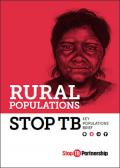
Resource | Publications,
Global statistics indicate that the TB burden is more acute in urban areas. However, in countries where large portions of the population are rurally located and reside in extreme poverty, TB is dominant among rural dwellers. Poverty and limited access to health facilities and health workers significantly diminish the ability of people with TB who reside in rural areas to obtain timely diagnosis and treatment. Stigma and widespread lack of knowledge about TB are also more common in rural communities. Multiple strategies to overcome these barriers exist and should be implemented at scale. This guide provides an outline of the specific challenges faced by rural dwellers and how these challenges can be addressed.
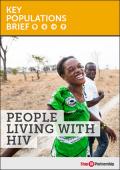
Resource | Publications,
While HIV-induced immuno-suppression makes people living with HIV (PLHIV) extremely vulnerable to TB, stigma, absence of precise point-of-care diagnostics, and poor integration of TB and HIV services make TB particularly deadly for this population. Along with stigma, other factors such as gender, poverty and malnutrition promote delays in diagnosis, present barriers to treatment, and impact patients’ adherence to medications.
On the policy side, delay in the implementation of WHO recommendations, staff shortages and inefficient distribution of staff, along with poor collaboration between vertical TB and HIV systems, also delay delivery of urgent care to PLHIV with TB. Political will and collaborative efforts involving civil society organizations are an obvious necessity in order to achieve the ambitious goals to end both HIV and TB.
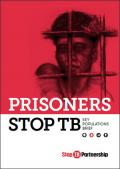
Resource | Publications,
Over the past several decades, the weakening of criminal justice systems and reliance on ineffective, overly punitive policies have led to the deterioration of prisons globally. This has caused overcrowding and facilitated the spread of infectious diseases such as TB and multidrug-resistant TB (MDR-TB). Prisons are intrinsically linked to communities; thus, the TB and MDR-TB epidemics in prisons have impacted health outcomes in countries where excessive incarceration is prevalent.
The inability of governments to address the needs of large prison populations, the lack of financial support and training for prison health staff, and various comorbidities presenting among prisoners with TB make it difficult to deliver effective TB treatment in prisons, cause delays in diagnosis, facilitate rapid spread of infection, and trigger frequent treatment interruptions. The issue of TB and MDR-TB in prisons cannot be addressed without focusing on alternatives to incarceration, promoting the rights of prisoners and prison staff, providing adequate support to health infrastructures within prisons, and working alongside communities and prisoners to provide for more effective rightsbased TB treatment and care-delivery models.
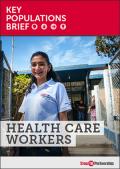
Resource | Publications,
Health care workers (HCWs) are at an increased risk of acquiring tuberculosis (TB) compared to the general population. In low-resource, high-TB-burden settings, occupationally acquired TB is depleting the very workforce fighting the disease on the frontline. Failures in health systems, occupational health (OH) services and TB infection control (TBIC), staffing shortages, supply issues, lack of funding, and lack of supervision, are putting the lives of HCWs, their families, and those they are tasked with caring for at risk. The fear of stigma, coupled with weak labour protections and poor confidentiality measures, often means that HCWs are afraid to disclose their health status to employers for fear of being ostracized or losing their jobs.
Where available, OH services and compensation schemes for HCWs are often poorly resourced and inefficient, leading HCWs to feel as though their TB is their problem alone. HCWs are perhaps the most valuable resource in the fight against TB. However, this is a group that has been neglected by health care systems and policy makers. More must be done to protect them, before it is too late.

Resource | Publications,
Globally, people who use drugs (PWUD) remain stigmatized and criminalized, which contributes to devastating health disparities, including extremely high rates of TB often combined with HIV and viral hepatitis. The range of these health issues and the prevailing lack of integrated health services capable of delivering TB, HIV, and harm reduction services in one place largely contribute to the scope of the TB crisis in communities of PWUD.
While the impacts of the TB epidemic are most acutely felt in PWUD communities in Eastern Europe and Central Asia, evidence is emerging from South and South-East Asia and sub-Saharan Africa that suggests that these issues are now universal. In countries where HIV epidemics are concentrated among PWUD and where rates of TB and multidrug-resistant TB (MDR-TB) are high, programme implementers and governments need to take immediate action, working alongside global and regional networks of PWUD and local PWUD activists to devise solutions that forgo punitive approaches to drug use and instead deliver effective and efficient results. Governments in other locales where TB epidemics among PWUD may be just beginning need to implement the necessary measures to engage communities of PWUD in all aspects of intervention planning, service delivery and impact evaluation. This guide outlines the key issues with access to TB prevention, treatment and care for PWUD, and provides recommendations for action and advocacy for communities, governments and donors.

Resource | Publications,
It is accepted that Tuberculosis is a communicable disease which is the major cause of morbidity and mortality globally and needs a dedicated and innovative approach for the prevention, treatment and control. On September 2015, the United Nations General Assembly formally adopted the "universal, integrated and transformative" 2030 Agenda for Sustainable Development, a set of 17 Sustainable Development Goals (SDGs). The goals are to be implemented and achieved in every country from the year 2016 to 2030.
This document is prepared to provide information about good practices on Tuberculosis control in SAARC Member States. Good practices comprise examples of programmes, projects and activities that have been shown to contribute towards making interventions successful. Sharing good practices is important.
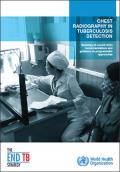
Resource | Tools,
Chest radiography, or chest X-ray (CXR), is an important tool for triaging and screening for pulmonary TB, and it is also useful to aid diagnosis when pulmonary TB cannot be confirmed bacteriologically. Although recent diagnostic strategies have given specific prominence to bacteriology, CXR can be used for selecting individuals for referral for bacteriological examination, and the role of radiology remains important when bacteriological tests cannot provide a clear answer. Access to high-quality radiography is limited in many settings. Ensuring the wider and quality-assured use of CXR for TB detection in combination with laboratory-based diagnostic tests recommended by the World Health Organization (WHO), can contribute to earlier TB diagnosis and potentially to closing the TB case-detection gap when used as part of algorithms within a framework of health-system and laboratory strengthening.
This document summarizes WHO’s recommendations on using CXR for TB triaging, diagnosis and screening. It also outlines a framework for the strategic planning and use of CXR within national TB programmes (NTP). Moreover, the document provides a brief overview of technical specifications, and quality assurance and safety considerations for CXR.
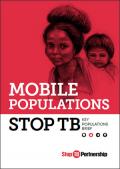
Resource | Publications,
Despite numerous international treaties and commitments to protect the health rights of migrants, this population still faces significant barriers in their access to TB care. Migration, which is driven by a number of complex economic, social, political and environmental factors, is a determinant of ill health, and the health outcomes of migrants are impacted by the various dimensions of the migration process. Migrants often arrive at their destination with low socioeconomic status, which makes them especially vulnerable to diseases such as TB. When accessing health care, migrants must contend with discriminatory policies and practices, poor availability of services, negative attitudes from health care workers, language barriers and stigma. TB does not stop at national borders, so policies to address TB in this population should not be constrained by local political concerns. There needs to be greater cooperation at the international level to improve TB surveillance, referrals and treatment across national health systems.
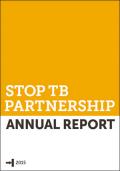
Resource | Publications,
In 2015, the Stop TB Partnership launched the very ambitious Global Plan to End TB 2016 – 2020: The Paradigm Shift. Without a clear investment plan and a complete overhaul in how this disease is tackled, TB is unlikely to be eliminated until the end of the 22nd century.
The new Global Plan 2016-2020 sets out the actions and resources needed over the next five years to set the world on a course to end the global TB epidemic by 2030, as endorsed by world leaders in the newly adopted Sustainable Development Goals. The Plan makes it clear that what is needed to end TB is a paradigm shift - a change in the way we fight TB at every level, in every community, in every health facility, in every country. To stay on national and international agendas, TB needs diverse country champions, strong engagement from multiple public sectors, businesses and the civil society.
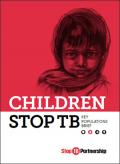
Resource | Publications,
Childhood TB has been called a "sentinel event" because it indicates failure on two fronts (1). First, it signals an ongoing transmission, since the child likely contracted TB from someone close to him or her and who has likely remained untreated. Second, it indicates a wider failure in the system, since it points to the lack of preventative therapy that could have easily stopped the child from developing TB in the first place (1). Because of the diagnostic challenges presented by childhood TB, symptoms are often missed. Missed or late diagnosis can have catastrophic health impacts for the child and increase the chance of mortality. Suboptimal diagnostic methods, poor screening compliance, and unrealistic treatment guidelines mean that children face even greater barriers to accessing care than adults, making this population even harder to reach. Children often exist as a vulnerable population within already vulnerable populations. Therefore, it is imperative that TB finally be addressed head-on by policy makers, civil society, and health professionals. Not only do children provide the reservoir from which future cases will develop, but continued inaction is costing lives.





